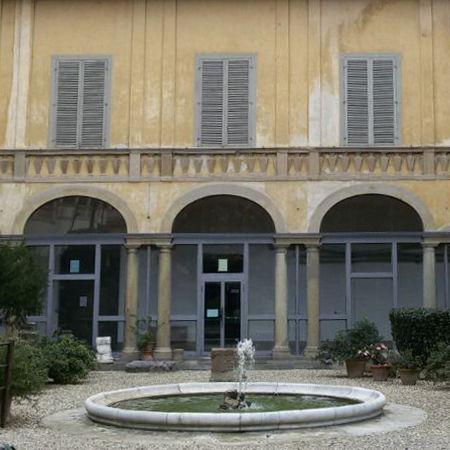
National Archaeological Museum, Florence. The National Archaeological Museum of Florence is an archaeological museum in Florence, Italy.
It is located at 1 piazza Santissima Annunziata, in the Palazzo della Crocetta. The museum was inaugurated in the presence of king Victor Emmanuel II in 1870 in the buildings of the Cenacolo di Fuligno on via Faenza.
At that time it only comprised Etruscan and Roman remains. As the collections grew, a new site soon became necessary and in 1880 the museum was transferred to its present building.
The collection's first foundations were the family collections of the Medici and Lorraine, with several transfers from the Uffizi up to 1890. The Egyptian section was first formed in the first half of the 18th century from part of the collections of Pierre Léopold de Toscane, from another part of an expedition promoted by the same Grand Duke in 1828-29 and led by Ippolito Rosellini and Champollion.
In 1887 a new topographic museum on the Etruscans was added, but it was destroyed in the 1966 floods. The organisation of the Etruscan rooms was reconsidered and reordered in 2006. Also in 2006, the 40-year-overdue restoration was carried out on over 2000 objects damaged in the 1966 floods. The Chimera of Arezzo-discovered in 1553 at Arezzo during the construction of a Medici fortress. The statue of the Arringatore, a life-size bronze sculpture of an Etruscan man wearing a toga. The funerary statue M
It is located at 1 piazza Santissima Annunziata, in the Palazzo della Crocetta. The museum was inaugurated in the presence of king Victor Emmanuel II in 1870 in the buildings of the Cenacolo di Fuligno on via Faenza.
At that time it only comprised Etruscan and Roman remains. As the collections grew, a new site soon became necessary and in 1880 the museum was transferred to its present building.
The collection's first foundations were the family collections of the Medici and Lorraine, with several transfers from the Uffizi up to 1890. The Egyptian section was first formed in the first half of the 18th century from part of the collections of Pierre Léopold de Toscane, from another part of an expedition promoted by the same Grand Duke in 1828-29 and led by Ippolito Rosellini and Champollion.
In 1887 a new topographic museum on the Etruscans was added, but it was destroyed in the 1966 floods. The organisation of the Etruscan rooms was reconsidered and reordered in 2006. Also in 2006, the 40-year-overdue restoration was carried out on over 2000 objects damaged in the 1966 floods. The Chimera of Arezzo-discovered in 1553 at Arezzo during the construction of a Medici fortress. The statue of the Arringatore, a life-size bronze sculpture of an Etruscan man wearing a toga. The funerary statue M
Wikipedia ...